BFS fishing – or bait finesse system fishing, to be precise – has taken the Bass fishing world by storm! Every season, new trends, tools, and baits generate buzz – and often, I’m slow to jump on the bandwagon. Not because I don’t like new stuff, but because I want to give the market time to evaluate and test for me. We’ve all seen new baits come in with a splash and then flame out quickly. The hype fizzles. The ripples fade. They go away, making room for the next best thing.
BFS fishing is different.
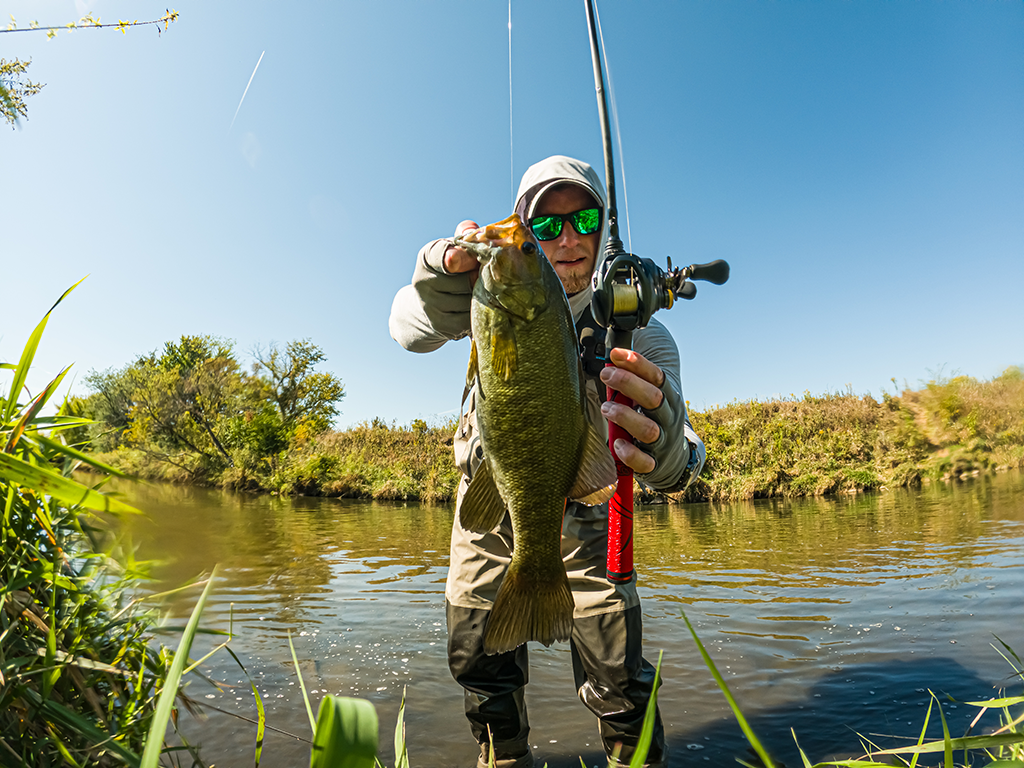
As a minimalist fisherman, I’m very careful and selective when it comes to bringing new things into the fold. I like to keep my gear compact, streamlined, and clean to make the most of my limited fishing time as I build and improve my fishing portfolio. I don’t spend a lot of money on gear, but this season, I splurged and dropped $400 on a new BFS combo. A Shimano Curado BFS with a Jenko Double Down BFS casting rod. It’s been a game-changer.
Let me show you what I learned along the way…
What is BFS fishing?
Bait finesse fishing is a baitcasting system optimized for throwing super-light lures on super-light line with exceptional control and precision. It’s almost surgical.
It traces back to Japan (shocker), where anglers paired shallow, lightweight BFS spools and low-inertia bearings with “whippy,” light power rods to present tiny baits precisely in high-pressure water.
But here’s where it gets tricky. This isn’t just a “small baitcaster.” Everything is different. From the engineering to the components, to the spool tension and drag settings, the baits, the line, the action of the rod, and the casting technique itself! All of these unique elements are what actually allow tiny lures to be launched into the stratosphere.
Small cranks, micro-jigs, finesse plastics, tiny topwaters… The list goes on. Anglers everywhere are trading in their spinning combos to take advantage of the thumb control, accuracy, and light-line management – not to mention the fun that comes with setting into a big Bass or an ornery Pike on a light-action pole. If you fish around areas where you’re working tight lanes with limited casting angles, or if you fish a lake that is heavily pressured – it’s time to dip your toe into the BFS pool.
Here are some of the critical components and tips you’ll want to keep in mind.
What to Look for in a BFS Fishing Rod
Most BFS rods run anywhere from 5 to 7 feet. The shorter length makes it easier to nail accurate casts – especially when you’re working in tight quarters. Longer rods are available, but I opted for the 7-foot length because it was closest to what I was used to with my baitcasters. Think about how you would prefer to use your BFS combo, and select a rod length accordingly.
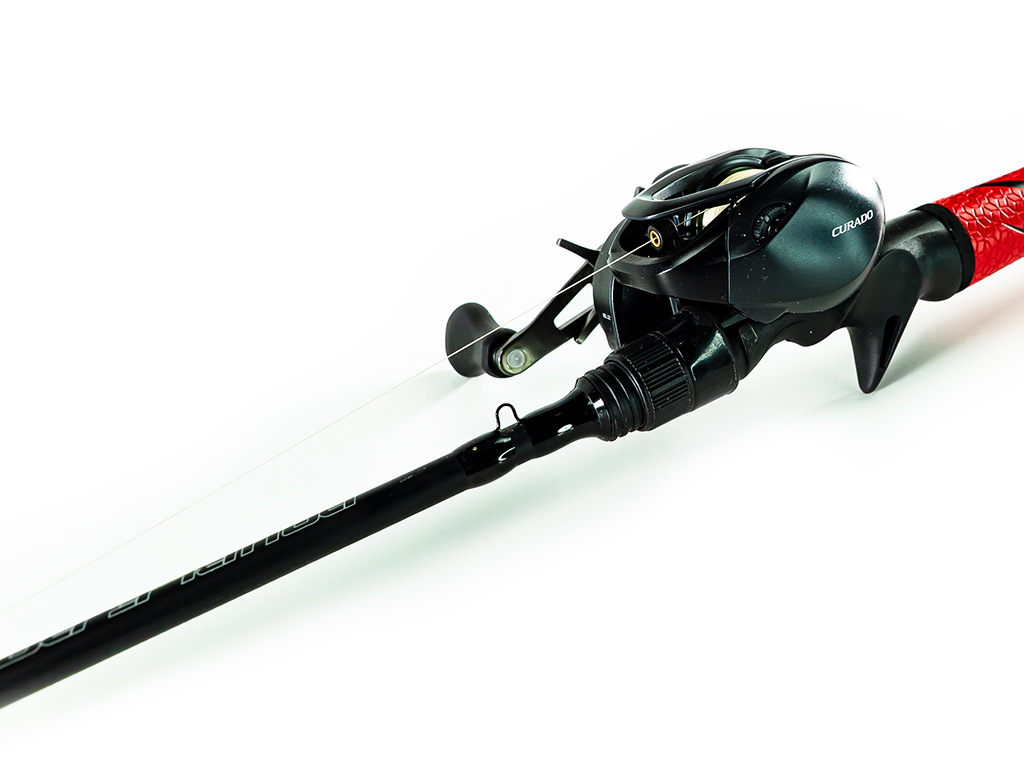
When it comes to rod power and action, there are a few things to keep in mind. First, remember that rod ratings are somewhat relative. There is no universal standard even though there are some generalities that are widely accepted to define how slow, medium, and fast action rods behave. Therefore, holding a new fishing rod in your hands with a reel attached is the best way to see if you like how things feel before you open your wallet.
If you want to throw extremely light lures, look for a rod with a moderate to moderate-fast rating. This allows the rod to bend, creating a gentle “whipping action” which is what propels weightless baits forward. If the blank doesn’t load up in this way on the cast, you simply won’t get any distance or accuracy. (If you’ve ever tried to launch a bait that’s too light on a traditional baitcaster, you know how frustrating and sloppy this can be… Birds nest, anyone?!)
The power should be somewhere in the light to medium range to start. This means that you’ll want to use baits with sticky trebles or jigs with exposed light-wire hooks since your setting power will be different from what you’re used to. We’re going to finesse ’em back to the boat, not drop the hammer!
Remember, this is a scalpel. This is surgical. I love fishing a heavy spinning rod combo in certain situations. But when it comes to BFS, we’re not bringing the wrecking ball!
What to Look for in a BFS Fishing Reel
When selecting a BFS reel, don’t skimp. The components – everything from the brakes to the bearings and spool – must work in perfect harmony. If they don’t, you’ll have problems. I decided to go with a major known brand that I trust, but there are many good options out there. Read reviews, look for a BFS reel that’s fine-tuned to the kind of fishing you plan to do, and don’t rush the decision.
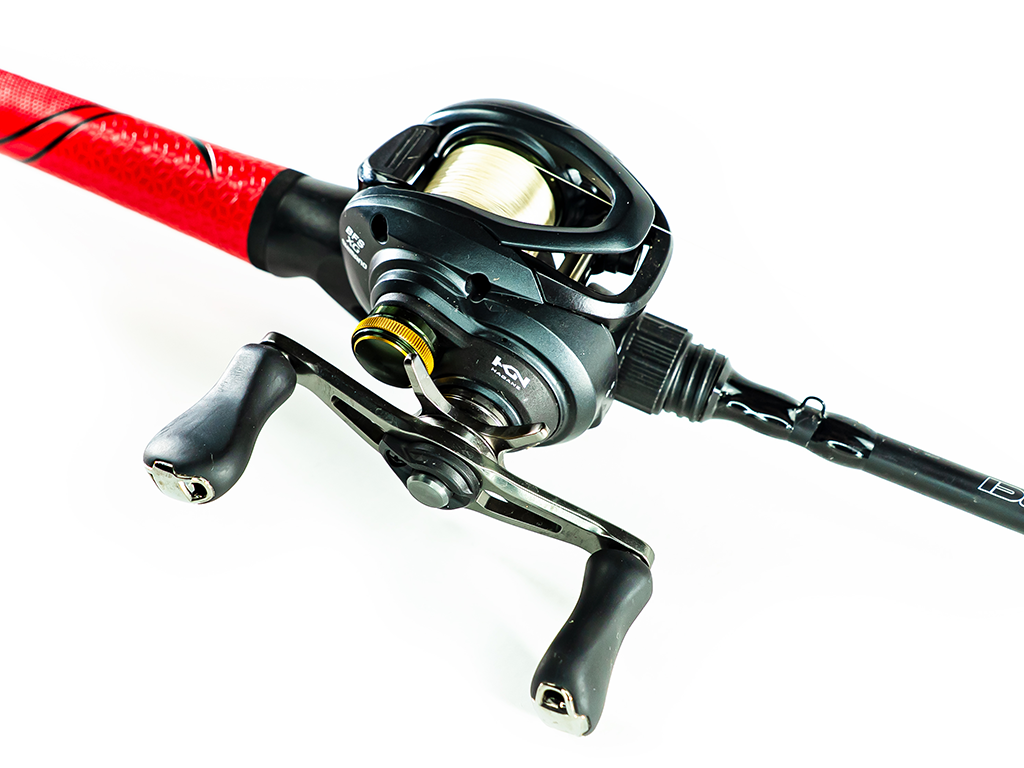
Pay close attention to the spool depth. This is a very important component. Shallow, lightweight spools with low rotational inertia are the heart of the BFS fishing system. They spin with minimal force, and a 1/32 to 1/8 ounce bait can pull line free effortlessly.
The braking system is also critical. Most lean on magnetic (“air”) brakes, which can help prevent overrun and lower the rotational speed without killing your cast. This helps you achieve stable flight but just like a traditional baitcaster, you’ll likely find that light-pressure while thumbing the spool on the cast is going to give you the best results. This will allow you to keep the line under control, while at the same time giving you the ability to stop your bait on a dime and place it into the water with a gentle ripple.
Once you have this dialed in, you’ll see it’s a beautiful thing. BFS is more than just a downsized profile – it’s literally a change in the physics of your fishing.
What to Look for in BFS Fishing Line
First and foremost, when it comes to BFS fishing line, prioritize diameter. We want thin – especially if your goal is to maximize casting distance. Small line reduces the start-up resistance and it helps you flick those featherweight baits.
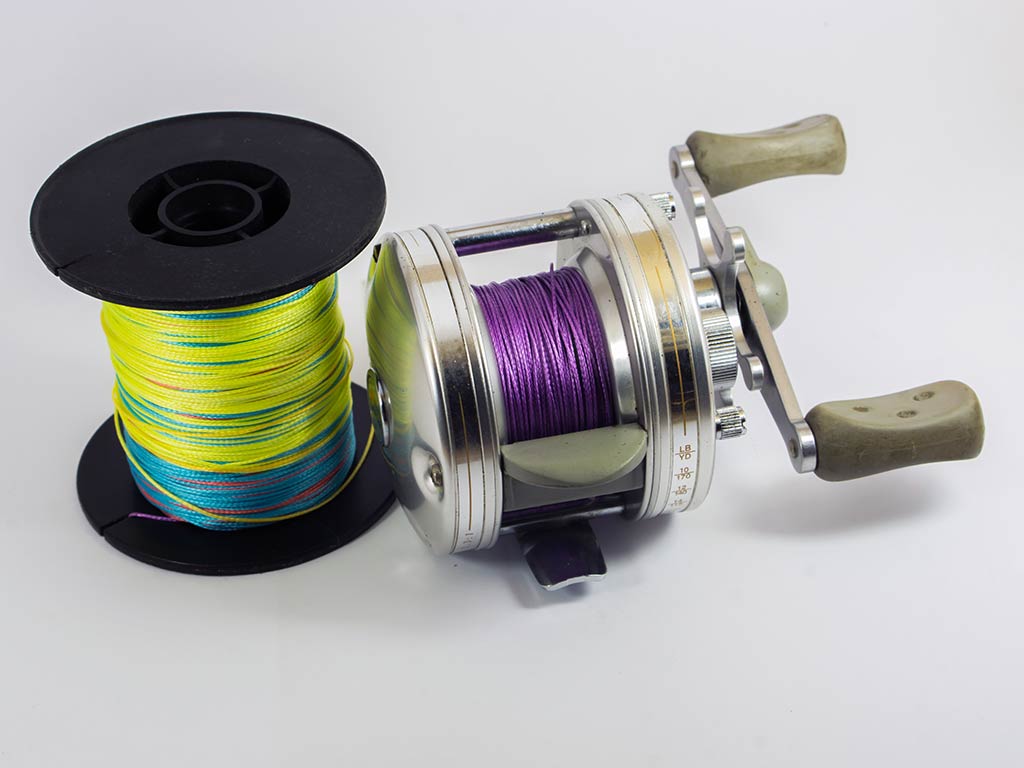
Do you want to fish with a braided superline? Monofilament? Fluorocarbon? Again, it all comes down to the kind of fishing you’d like to do and the techniques you’ll lean into. But the good news is that manufacturers make something for everyone.
“Buy it all!” they’ll say. But no. Buy just some.
If you’d like to use fluoro, I’d recommend starting with 4 lb test. For monifilament, I’d stay in the 4–6 lb range. For braid, it’s going to be very limp, whether you go with 2 lb test (yes, you read that correctly) or 10 lb test. I typically stick with 10 lb test braid and tip my line with either a monofilament or fluorocarbon leader (one floats, the other sinks – here’s the best knot for tying both of them to braid). I’ve had great luck with this setup and landed Largemouth, Smallmouth, and even some hefty surprise Pike with no trouble!
Just remember, braid offers terrific handling and sensitivity at small diameters, but it can “dig in” on itself more than mono and fluoro, and it’s not as abrasion-resistant. Fluoro sinks and has great abrasion resistance, but it’s the stiffest option with the most memory. Mono floats and it sits between the other two line types, but it also adds stretch to the equation.
Think about how you plan to fish first, then pay careful attention to the line diameter so you can select a very thin line that lets you get the most out of your BFS gear.
What to Look for in BFS Fishing Baits
BFS combos shine when you want to pitch a tiny plastic a mile away. There are all sorts of options for you to consider. Hard and soft tiny topwaters, little swimbaits less than an inch in length, and tiny hair jigs cast well once they’re wet. Jerkbaits under the 3-inch mark and even micro crankbaits can be effective and fun.

Of course, never write off small plastic offerings. A little jig worm, a Ned rig, a 3″ stickbait rigged wacky… The possibilities are truly endless.
I really enjoy throwing three specific baits on my BFS gear, and I’ve caught countless fish this season alone on them. First, I start up top with a Strike King Bitsy Splash. This is a popper-style bait that can be worked fast or slow. It’s small, and the little off-white/yellow color they come in is outstanding for Smallmouth Bass in creeks and rivers.
Next, I’ll go subsurface with a Megabass X-70 jerkbait. Depending on the weather and cloud cover, I’ll play with colors. Overcast days are great for their Mat Shad (a yellow-white color with no gloss), while on clear days I tend to lean towards a semi-transparent color like their GP Pro Green or Baby Trout. Select a color that matches the bait fish in your area, or one that’s completely different if you want to grab their attention.
Finally, when it’s time to drop down to the bottom, I’ll grab a Z-Man TRD Tube (PB&J or classic green pumpkin). I pop it on a 1/16 ounce mushroom head jig, then fish around flats, rip-rap, shade, and boulders. If the fish are there, they’ll let you know in a hurry!
A Proper BFS Fishing Reel Setup
Before you even attempt a cast, we want to make sure that your spool is filled properly. BFS spools are shallow. You’ll notice just how distinct this is when you handle your first reel. As you spool up, just make sure that you don’t overfill. Leave a bit of a visible lip and remember that overfilling leads to more line coming off the spool than what you want. In short? More backlash.

Fill properly, thumb-brake when needed, and develop a good “feel” for a quality cast.
Next, set your tension knob and magnetic braking system. This requires a complete mindset shift. Remember – this is not a traditional baitcaster! The “drop test” won’t work here.
This is the best BFS reel setup method.
To properly set your BFS spool tension, tighten the spool tension knob on the side of your reel, then loosen it bit by bit by painful bit until you can barely feel slight side-to-side movement (or click). Stop. We want the spool to spin freely, so that we can rely on our braking system and our sense of feel (and of course, our thumb).
Once the tension knob is locked in, set your magnetic braking system much higher than you think you need to. We’ll begin making practice casts and slowly dialing back the brakes until the line flies freely off the spool, with the tension knob and the magnetic brakes doing most of the line control work.
When this is perfect, you’ll know. Everything will work together in beautiful harmony, provided you use the proper casting technique…
How to Cast a BFS Fishing Combo
When it comes to casting, you must remain calm. You must remain in control. If you push too hard or start to daydream, it’s game over. When you miss a strike, if you try to cast back too aggressively, you’ll experience an instantaneous bird’s nest. You must remain stoic and live in the moment at all times. Become a casting monk or the BFS gods will punish your sudden movements with unholy tangles!
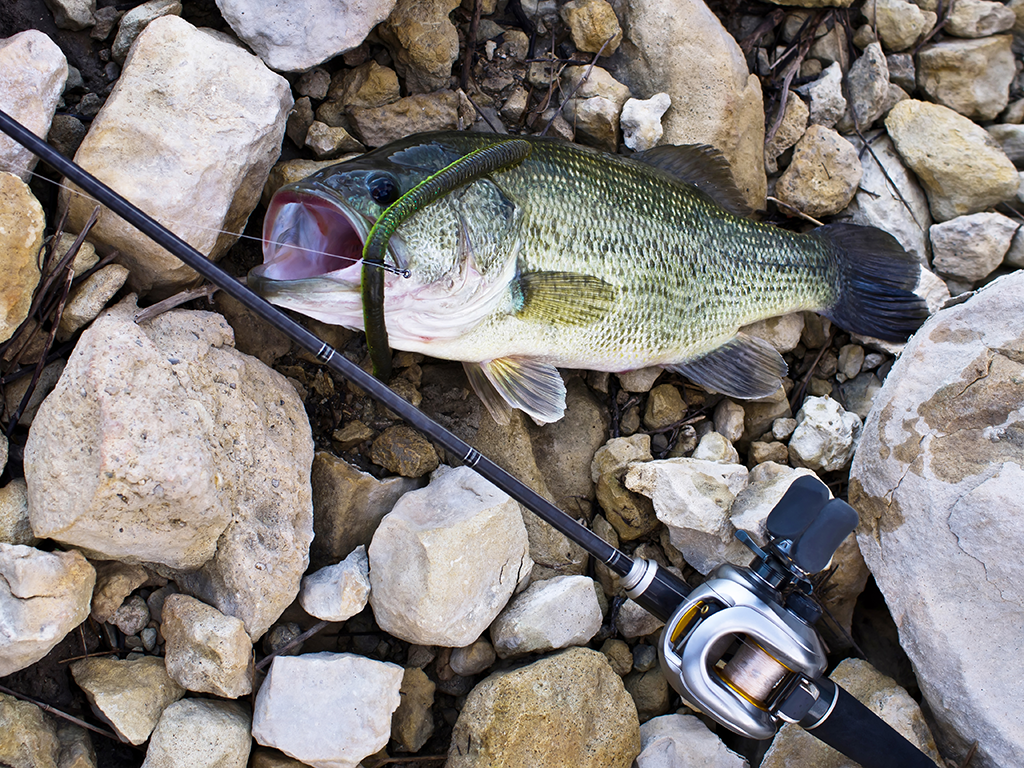
Your cast should be smooth. A roll or underhand cast with a low, flat trajectory is perfectly fine (and you can certainly air it out if you want), but you must bring the rod back far enough – and bring it through fast enough – that you can take advantage of the bend in the rod itself. A slight, controlled whipping motion is what allows you to snap the bait forward and away from you to really send it sailing.
Drop your thumb on the spool at the moment your bait hits the water – or even slightly before if you want to “set” your bait down with minimal noise and splash. Also, play with your release point. This will be different depending on the size and shape of your bait. Of the three examples I mentioned above, the jerkbait is actually the most difficult to cast because it tends to catch the most air and, therefore, resistance. If you’re nervous and want to practice with a bait that won’t throw you a curveball, opt for any 2–3″ piece of solid plastic with no appendages. Cut a third off of a Dinger or Senko, or use a standard TRD.
There’s nothing here that resembles brute force. It’s all about technique. It’s a flick, not a punch in the face. That shallow, properly-loaded spool will go without much coaxing – you just need to clear the runway.
When & Where BFS Fishing Shines

Now that we’ve laid out the proper tools and techniques for using BFS Fishing gear successfully, you’re probably wondering where it can shine. Here are four excellent options:
- Pressured water with educated fish. Subtle tactics can generate bites when power tactics only get followed.
- Around tight targets. Sure, a properly lubricated, tuned-in spinning reel can work well, but a baitcaster simply offers more accuracy, no question.
- Shallow-bank missions, creeks, and rivers. Wading and tossing tiny baits with a baitcaster is both super effective and super fun!
- Multi-species overlap. Tiny baits can appeal to everything that swims. You’ll likely catch monster Panfish and keeper game fish on the same BFS presentations.
Common BFS Fishing Mistakes
Here are a few common mistakes you’ll see people make. Avoid them at all costs:
- Do NOT use a standard baitcaster. It’s not happening. You need a true shallow spool and that low-inertia requirement to accurately cast tiny BFS baits.
- Do NOT over-tighten the spool tension knob. Unlike your standard baitcasters that you fine-tune using the drop-test, we need the spool to spin freely. BFS fishing requires you to rely on your own sense of feel and the magnetic brakes.
- Do NOT whip the rod on the cast too much. Utilizing the bend in the rod and letting it do some of the work for you is a great way to obtain distance. Just make sure to stay in control.
- Do NOT overfill your spool. Overfilling amplifies everything – in a bad way. Like playing a kazoo into a megaphone. Just because you can do something doesn’t mean you should.
Give BFS Fishing a Try!
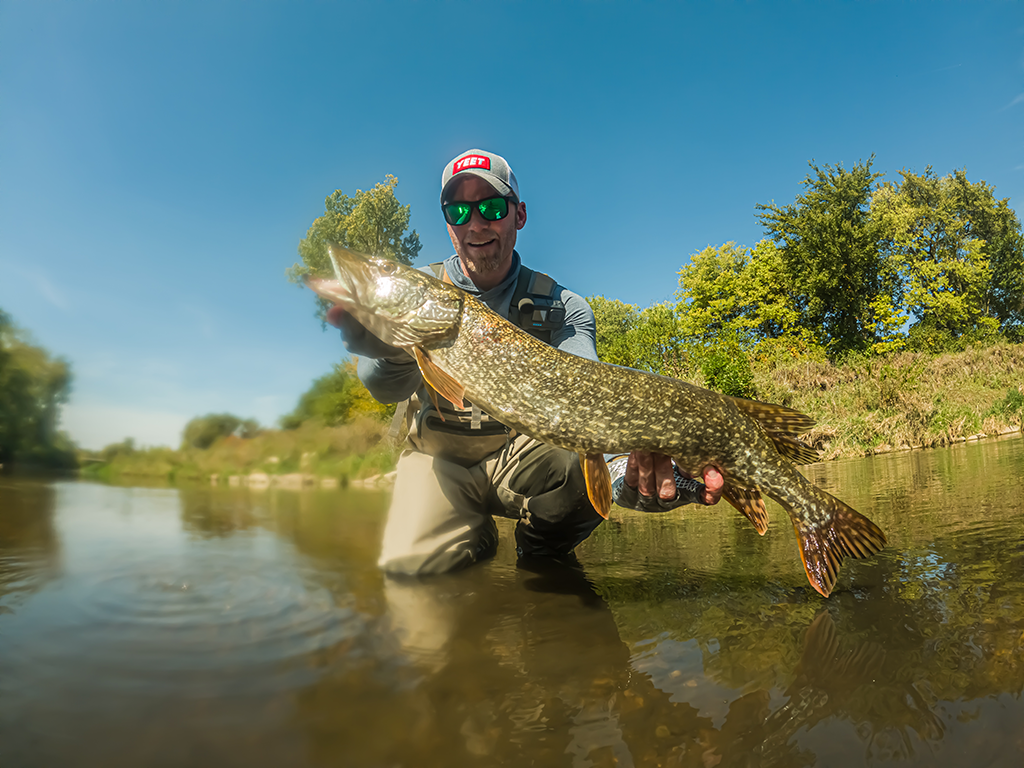
BFS fishing is a system. It’s a mindset. It’s not a fad – it’s something that can truly expand your options on the water. Get it right, and you’ll see why it’s earned a place in my minimalist fishing system. Once you experience the precision – and fun – you’ll never look back!
Tight Lines and Godspeed, Patriots.
Are you a BFS fisherman? What are some of your tips to make the most of your BFS fishing gear? We’d love to hear from you in the comments below!
